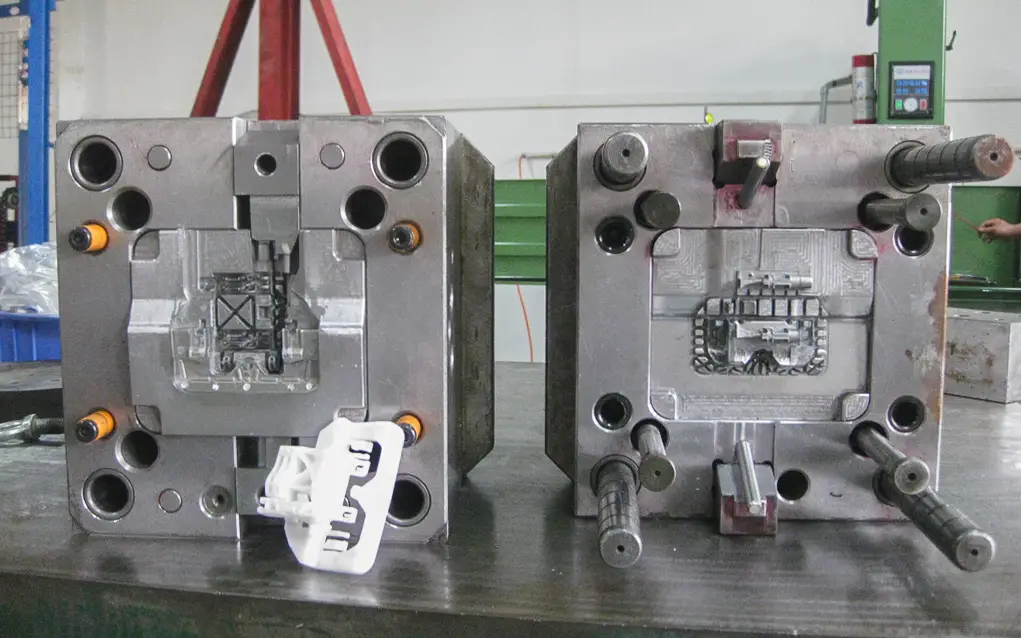Estimated reading time: 4 minutes
If you are in the manufacturing industry, sometimes it becomes tough for you to choose the ideal metal. Yes, you can use your conventional wisdom but believe us, the world of injection molding doesn’t depend on that only.
When it comes to injection molded parts there are many variables behind choosing a metal for final products.
Here we will describe those factors you should take into account before choosing your injection molding parts. Is it steel or Aluminium?
Initial Tooling Costs
If you consider tooling costs, aluminium has a clear advantage. Aluminium costs less, so in terms of pricing, it has a clear advantage over steel. However, the overall cost and total ROI (Return of Investment) might vary for steel and aluminium mold. But if the initial cost is your primary concern, aluminium is the best you can get. Here we have created a table to clear the pricing of both metals.
| Steel Mold | Aluminium Mold | |||
| Units | Total cost USD | Per unit cost USD | Total cost USD | Per Unit cost USD |
| 1 | 5000.5 | 5000.5 | 1600.5 | 1600.5 |
| 10 | 5005 | 500.5 | 1605.0 | 160.5 |
| 100 | 5050 | 50.5 | 1650 | 16.5 |
| 1000 | 5500 | 5.5 | 2100 | 2.1 |
Each part Cost
This depends on the individual production of a certain product and for how much time you want to run this mold. As aluminium costs less, the parts also cost less for a shorter period of time. But if you are looking for long-term production, the scenario will change.
We have demonstrated the unit cost in the table of the previous section. But that is for a short amount of products. If you plan to manufacture a huge quality, for example, millions of parts, steel mold will dramatically reduce your cost.
Steel molds sustain for a long time, and you can produce a huge amount of parts with steel molds.

Low Volume Production
If you are making molds for a low-volume product, aluminium molds will reduce the costs. Aluminium has a lower tooling cost. So, if you are planning to produce a quantity of around a thousand pieces, aluminium would be a good choice for you. Aluminium can sustain tens of thousands of injection molded parts also.
So, pick aluminium if you are not planning to manufacture a huge amount of parts.
High Volume Production
Though aluminium can produce thousands of parts, it is not suitable for more than that. On the other hand, steel molds can handle a huge production. Though the initial tooling cost is high in the long run, steel molds will reduce your production costs.
For longer production, steel molds are unparalleled.
Temperature Fluctuation
If we consider the heat dissipation rate, aluminium has the upper hand over steel. Aluminium molds can quickly heat up and cool down quicker than steel molds. To be precise, aluminium molds are seven times more efficient than steel in heating up and cooling down.
Fewer cooling times has some significant advantages. For example, it increases the production rate. As a result, you can manufacture more parts with aluminium molds faster than steel molds.
Advanced Resin Suitability
Aluminium and steel are both suitable for standard injection molding resins. But if you are working with advanced or complex formulation, steel will bring better results. For example, if you are dealing with fiber, glass, or other additives steel mold will be a better choice.
Aluminium is a soft metal and can damage certain additives. Consequently, aluminium molds can damage the finishing of the final product. So, be sure the additives or materials you are using are suitable for the mold.
Modification
Sometimes molds can be damaged through the manufacturing process. If you are using steel mold, that is quite expensive to modify or repair. Steel is a very hard material, and you can not easily repair it. On the other hand, aluminium is a soft metal. So, if you use an aluminium mold, you can easily repair it. It is helpful if you face any production issues.
Durability
Steel is much ahead of steel if durability is your concern. If your design is complicated and needs the best practices of injection molding, steel molding will be your best choice. How is it beneficial? For example, your design has less rounded corners, thin walls, narrower areas; steel molds will hold those for a longer period of time than aluminium molds.
Conclusion
Injection molding plays a huge role in plastic parts manufacturing. But many designers or business owners find it difficult when comes to choosing the ideal metal for their projects. At first glance, it seems aluminium mold will be cheaper than steel molds. But that is not always the fact. It largely depends on the volume of your production. Besides, the material also plays a role before you choose the ideal metal.
After reading this article, we hope it will be easier for you to determine one from aluminium and steel for your next injection molding project.
Share this content:
